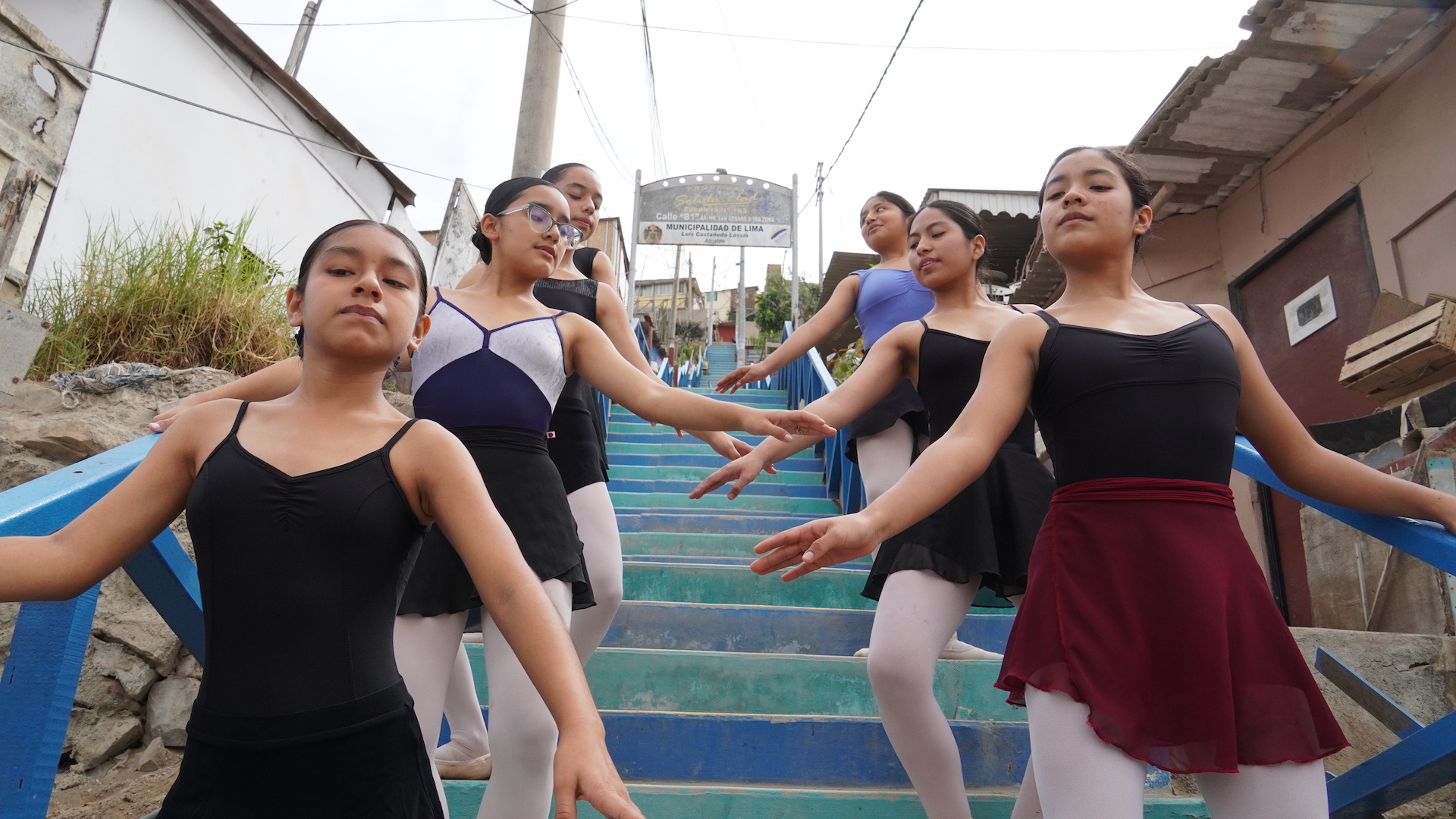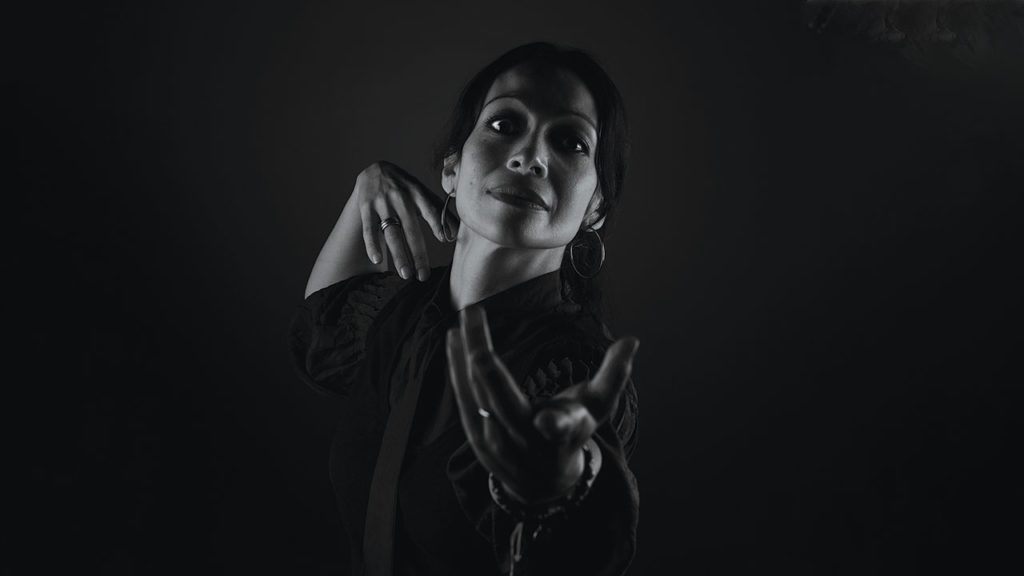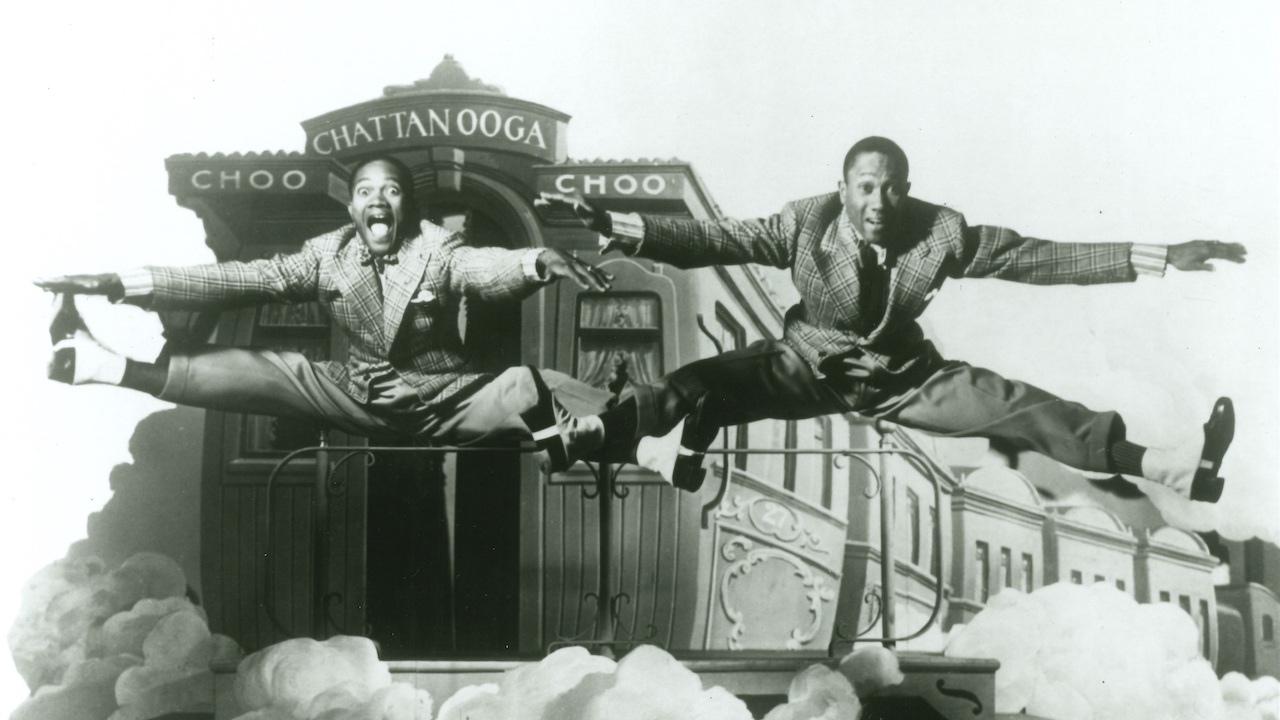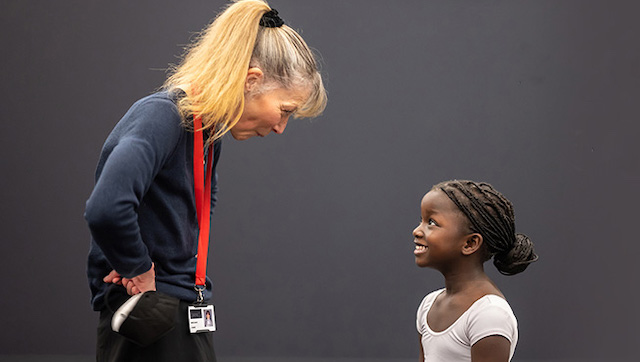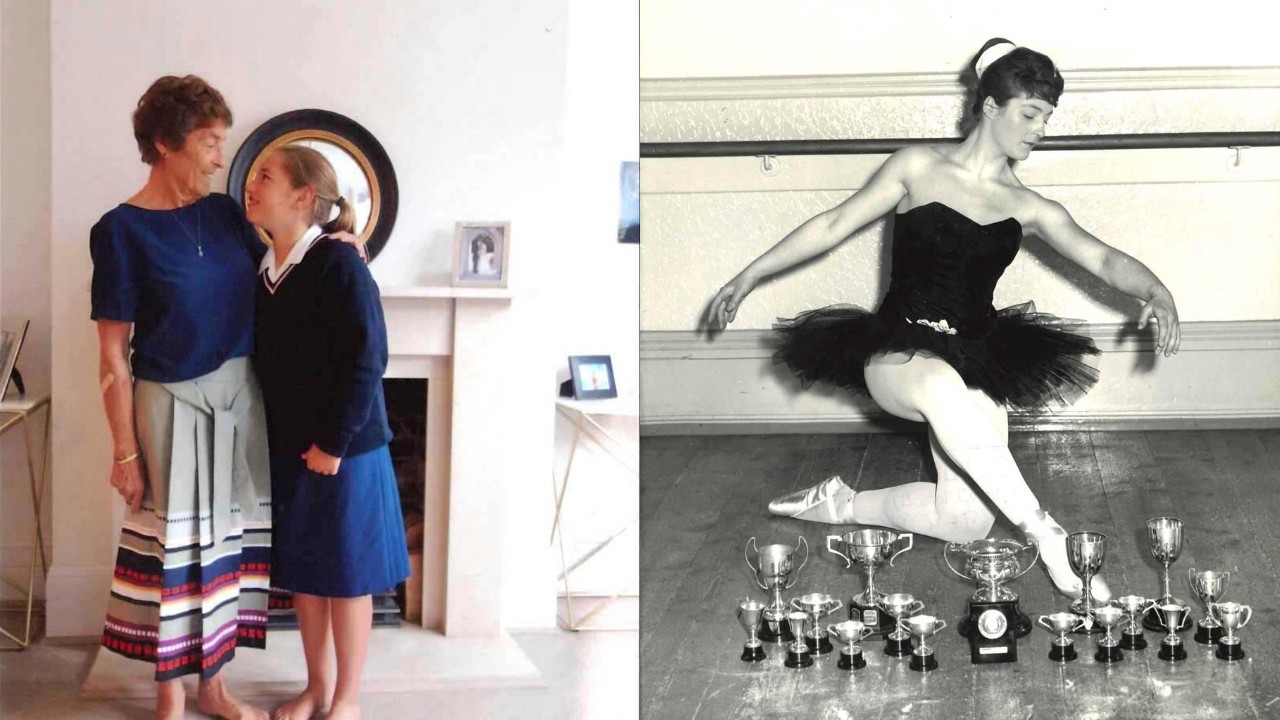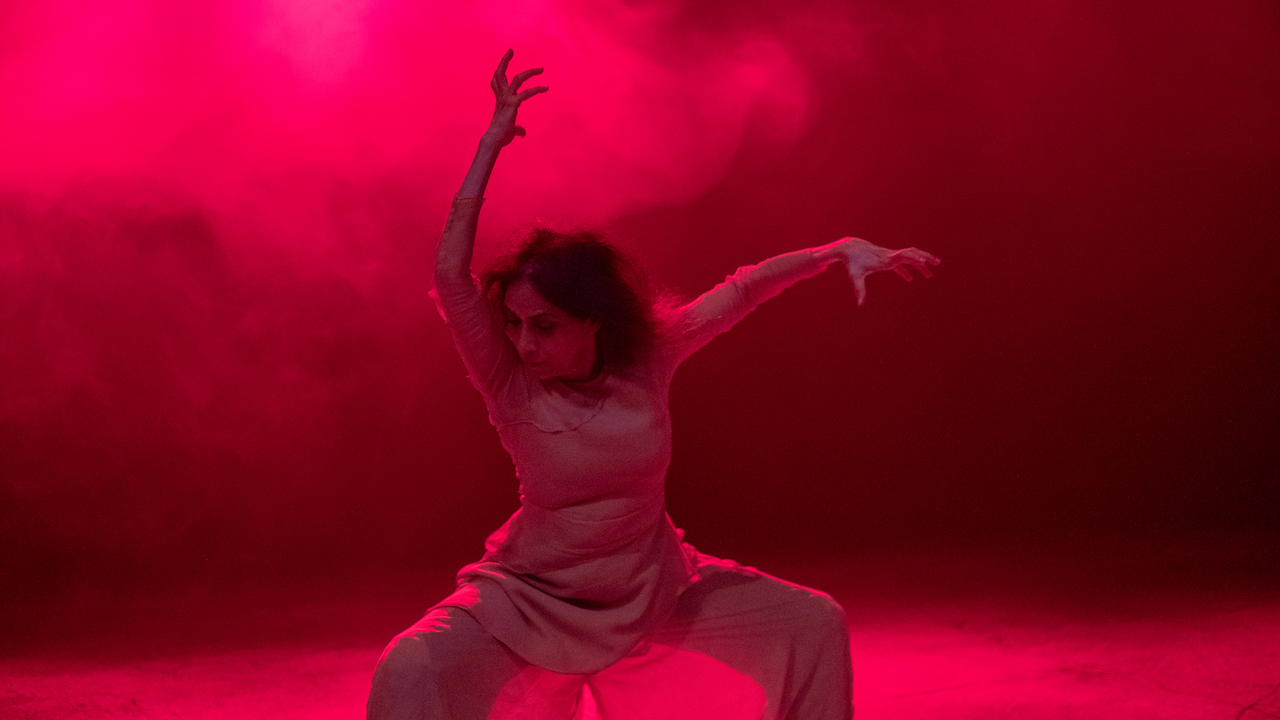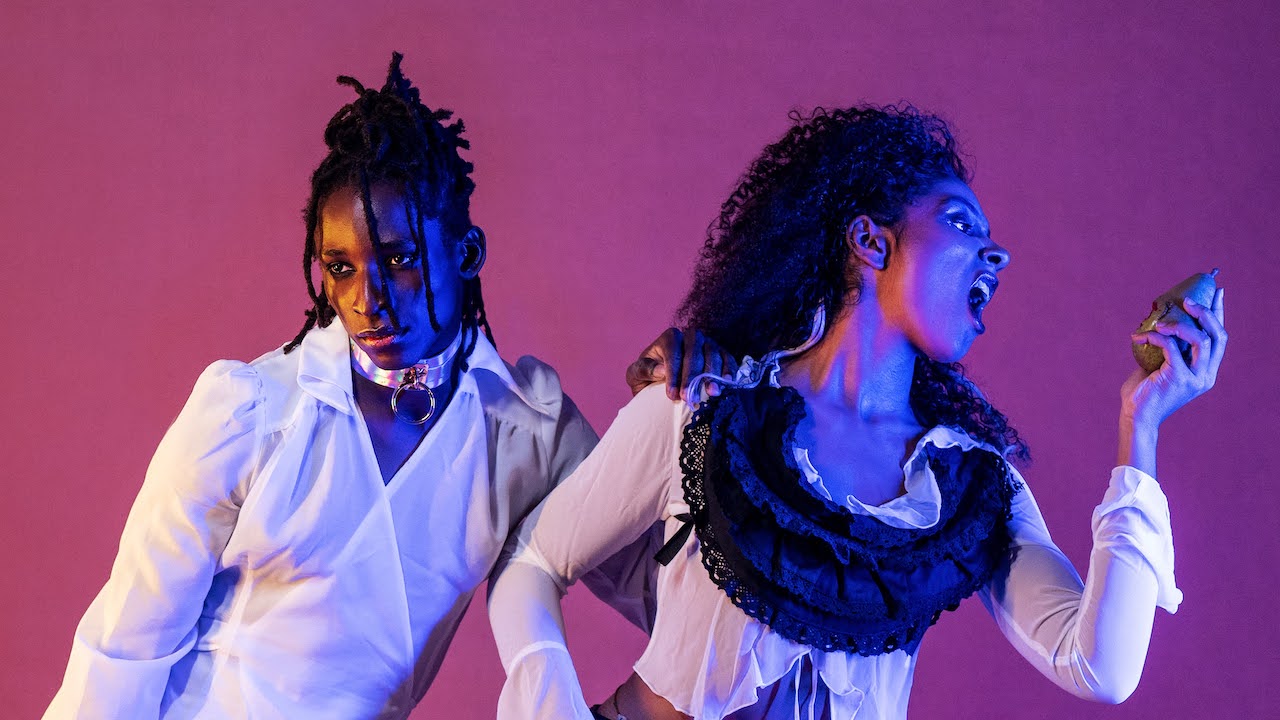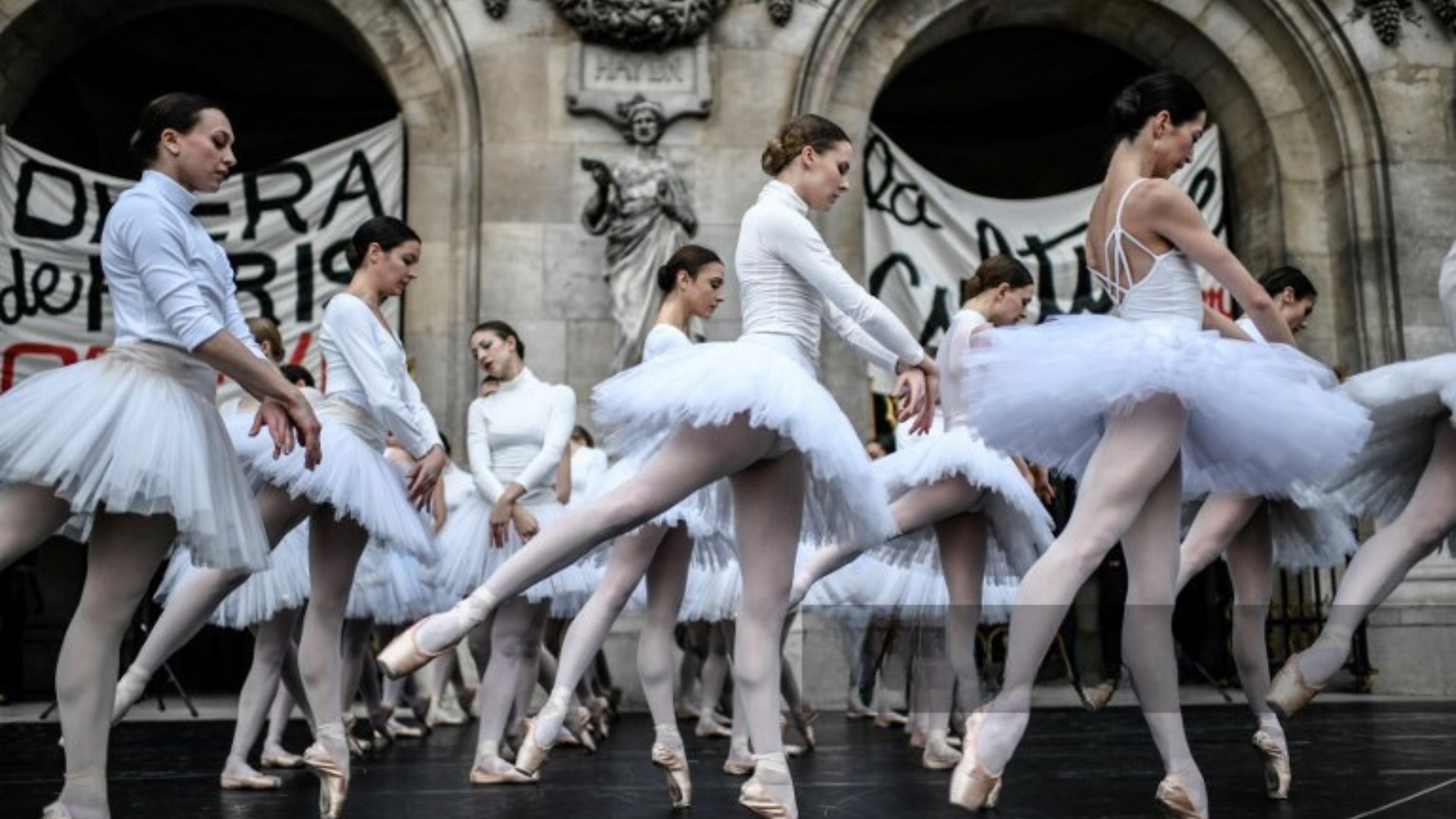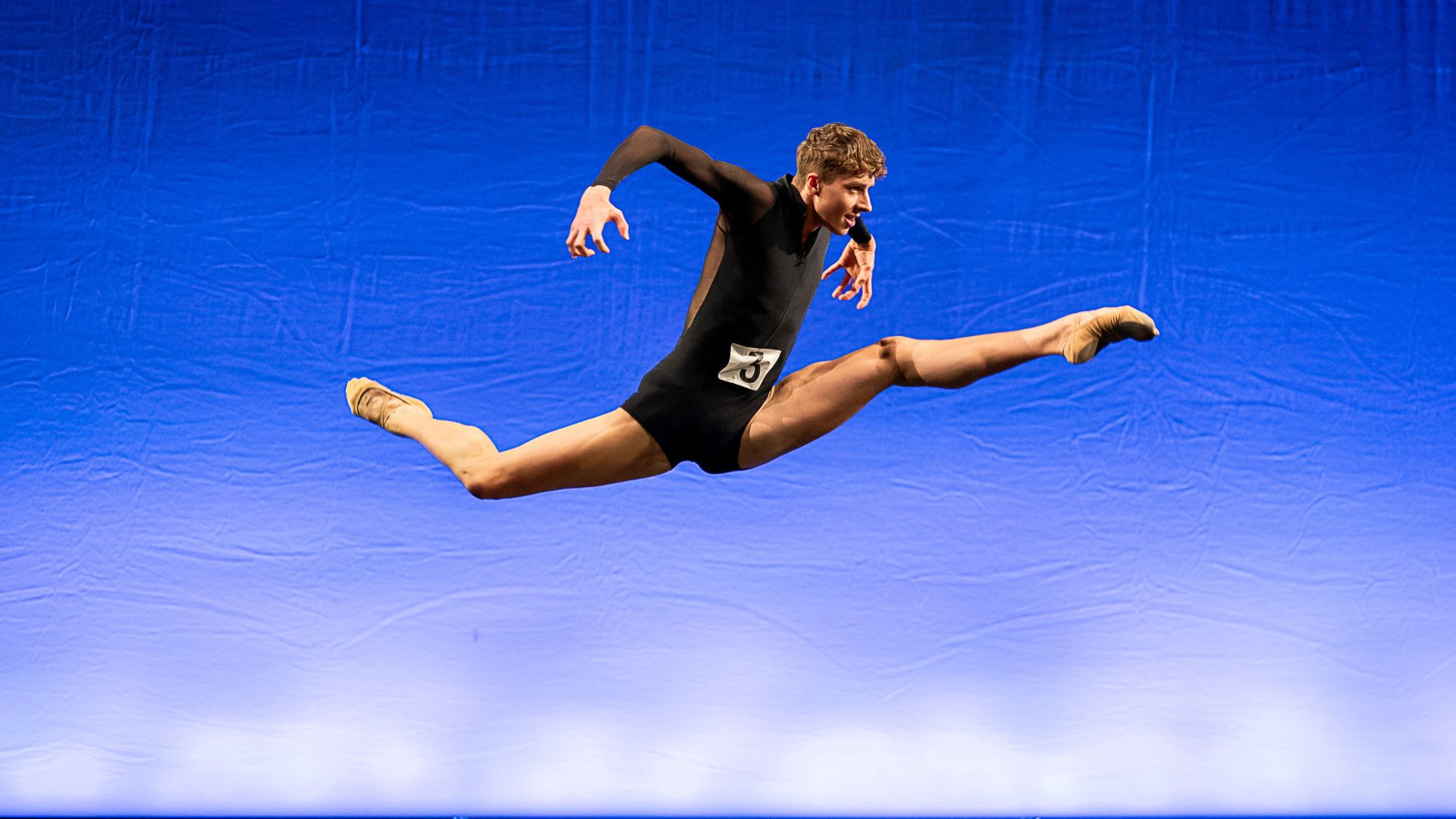With arms resting lightly on a wooden rail and pink ballet shoes on alternating blue and green concrete steps, the girls move from demi-pointe to pointe and relevé to plié as if completely oblivious to their surroundings.
These ballet students, aged between 12 and 16, are positioned with almost geometrical perfection on a rising staircase which runs straight up to the top of a dusty hill behind them, disappearing to a vanishing point. Instructing them, with a gentle wave of the hand and her chin raised attentively, is Marícarmen Silva, a Royal Academy of Dance ballet teacher.
On both sides of the stairs, tumbledown clapboard shacks cling to the steep embankment. Built into the rock and dirt of the barren hill they stretch up and down the hillside, made mainly of plywood. Some painted colourfully, others made from advertising hoardings with corrugated iron roofs, they extend as far as the eye can see.
San Genaro is one of many peripheral neighbourhoods on the outskirts of the conurbation of Lima, Peru’s coastal capital and home to one-third of the country’s population. The poor barrio lacks piped water, residents fill water tanks from weekly water trucks and the electricity supply is patchy.
Unsurprisingly, open-air ballet classes are an uncommon sight. But Silva, 59, a former dancer with Peru’s National Ballet, is prepared to put her students through their paces wherever they may be. She has created her ballet school to be inclusive to girls and boys of all physical abilities as well as economic backgrounds. For those who can’t afford to pay the fees, or for the exams, she finds a way to raise the funds.
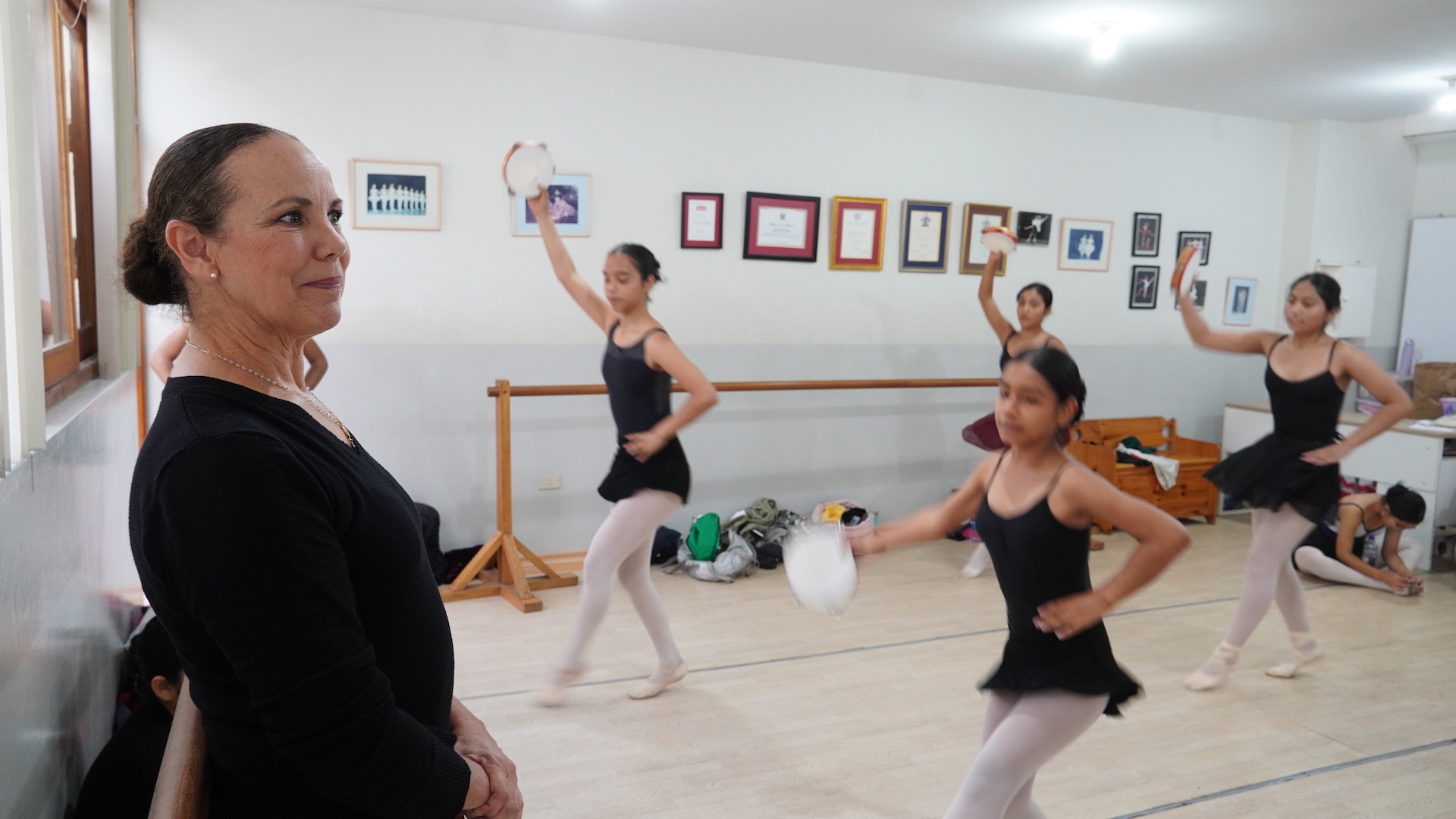
‘Like any ballet teacher, I do this because I believe it makes you happy and does you good,’ says Silva dressed elegantly in black with discreet jewellery and her hair tied back in a bun. ‘Whether they will be ballerinas or not, the process of discipline, teamwork, work on oneself, perseverance, helps them. In the case of my girls, they are very resilient because they have to be. In spite of all the difficulties, they put on a brave face and we carry on.’
Millions of Lima residents, including the families of most of Silva’s students, live in places like San Genaro. Ballet provides a welcome sense of discipline, order and an aesthetic escape in rundown neighbourhoods where patchy infrastructure and poor transport links are often the result of non-existent urban planning.
Ballet students Nicole Chávez, 15, and her sister Keith, 12, live next to the green and blue steps in a self-built shack perched on San Genaro’s steep hillside. It overlooks Chorrillos, a working-class neighbourhood on the southern edge of the sweeping bay of the coastal capital. For Nicole, ballet is an escape. ‘I feel great happiness when I dance. I feel that I can breathe well, like I’m in another world, and everything else disappears,’ she says, standing ramrod straight with large glasses framing her eyes.

‘In spite of all the difficulties, they put on a brave face and we carry on’
Maricarmen Silva
Her mother, Elcira Ruiz, 37, had never heard of ballet before her daughters began classes. A migrant to Lima from Huancabamba, a poor town in the far north of Peru, she moved to the capital to offer them better opportunities for education and work than she enjoyed. Ruiz is relieved that they have an activity which keeps them busy and away from temptation in a neighbourhood known for violence and crime. ‘Here there are girls of my daughter’s age who are involved in drugs and are getting drunk at all-night parties,’ lamented Ruiz. ‘It makes me sad, they were friends with my daughters when they were little. Fortunately, my girls don’t have time for such things. [Ballet] protects them from many negative things.’
A seamstress who also sells clothes at the local market, Ruiz helps raise money for classes, transport and even competitions abroad from her earnings. Together with Silva and the other students’ families, she recycles plastic and paper for which they get paid per kilo. ‘What to some is rubbish, for us is the way we get money to do our Royal Academy of Dance exams, to travel and sometimes to commute from one side of Lima to the other,’ says Silva as she dropped off bags of paper, cardboard, old school books and plastic bottles at a deposit at a public secondary school.

‘What to some is rubbish, for us is the way we get money for our RAD exams’
Marícarmen Silva
Thanks to fundraising efforts, students like Nicole and Keith have participated in competitions abroad in Panama, Brazil and the United States. For nearly all the students, it is the only time they have ever travelled outside Peru. Those occasions are the opportunity of a lifetime for the teenage girls, but they also sacrifice their time and spend hours commuting to attend Silva’s academy behind the Fatima Church in Lima’s middle-class Miraflores neighbourhood.
Silva believes in the healing power of art. ‘One characteristic of ballet is that we dress up as princesses – with the crown, with these wonderful dresses, with glitter. That helps a lot with self-esteem because you feel beautiful,’ she says, as her students practice demi-pliés at the barre.
‘[Ballet] has taught me how to be a resilient girl at a young age,’ says Ashley Távara, 13, who moved to Peru from Venezuela five years ago and has recently begun classes with Silva. She faces a long commute alone on buses to get to classes. ‘I’ve learnt to be a fighter. I’ve learnt how to look after myself on the street,’ she smiles. The teenager is one of some 1.5 million Venezuelans living in Peru, the second largest migrant population after Colombia. The country’s dire social and economic situation has forced more than seven million Venezuelans to abandon their country, according to the United Nations Refugee Agency.

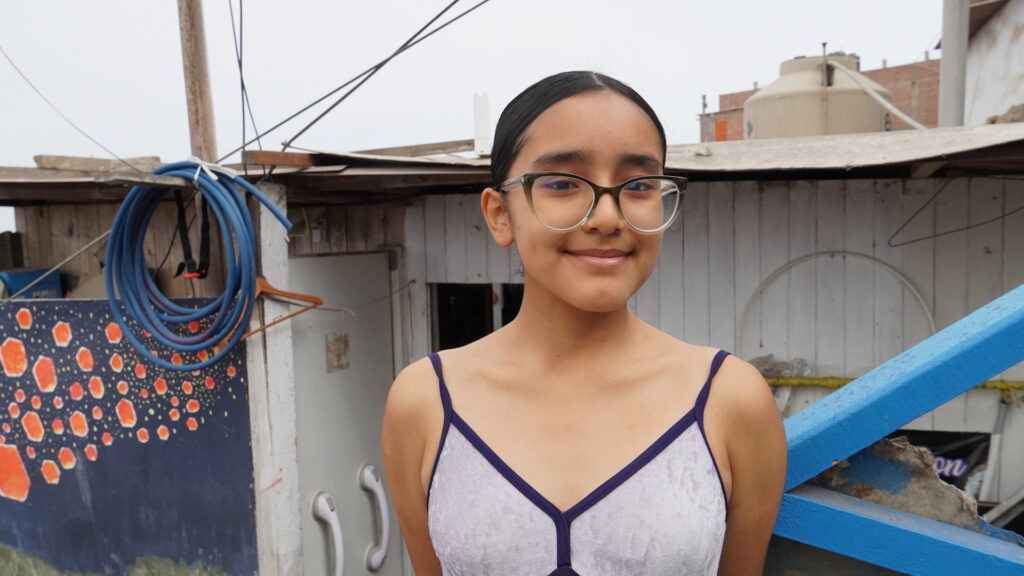
‘Before I treated [ballet] like a hobby – now, with Miss Marícarmen, it’s part of my life. I dedicate a lot of time and effort to it, otherwise it wouldn’t make sense,’ says Layra Marcas, 14, another student who travels across town to get to Silva’s tri-weekly classes. Young women face risks travelling alone in Peru. Sexual violence is pervasive; eight out of 10 Peruvian women between 18 and 29 said they had experienced some form of sexual harassment on the street, according to a 2019 study by the country’s ombudsman’s office.
At her studio, Silva also makes space for students who are differently abled. ‘Here, the differences disappear, you work and no one feels superior to anyone,’ she reflects. Lucía Viacava, 15, has cerebral palsy but doesn’t let that get in the way of her passion for ballet. Lucía’s mother, Hilda Buller, says her daughter has been in love with the dance form ever since she was six. ‘The spirit of dance in our house is her,’ she tells me, explaining that Lucía was so obsessed with ballet that she began to look for a teacher. Four friends recommended Silva.
‘When I approached her she said: “Let’s see if she adapts to us, not if we adapt to her.”‘ Taken aback at first, Buller has no complaints now. On the contrary, she has noticed improvement in Lucia’s motor skills, posture and strength. ‘She’s been two years without convulsions and that is [taking into account] all the emotions, both good and bad,’ she says. Lucía has been able to participate in competitions and take RAD exams. ‘Here, they are much more integrated, much more connected – she feels part of the group. If you join it, everybody starts to help,’ Buller added.
As her pupils prepare for upcoming RAD exams this October, the mood in the dance studio is one of quiet concentration – occasionally broken by Lucía’s excited outbursts as she performs certain moves with the support of her mother or Silva.
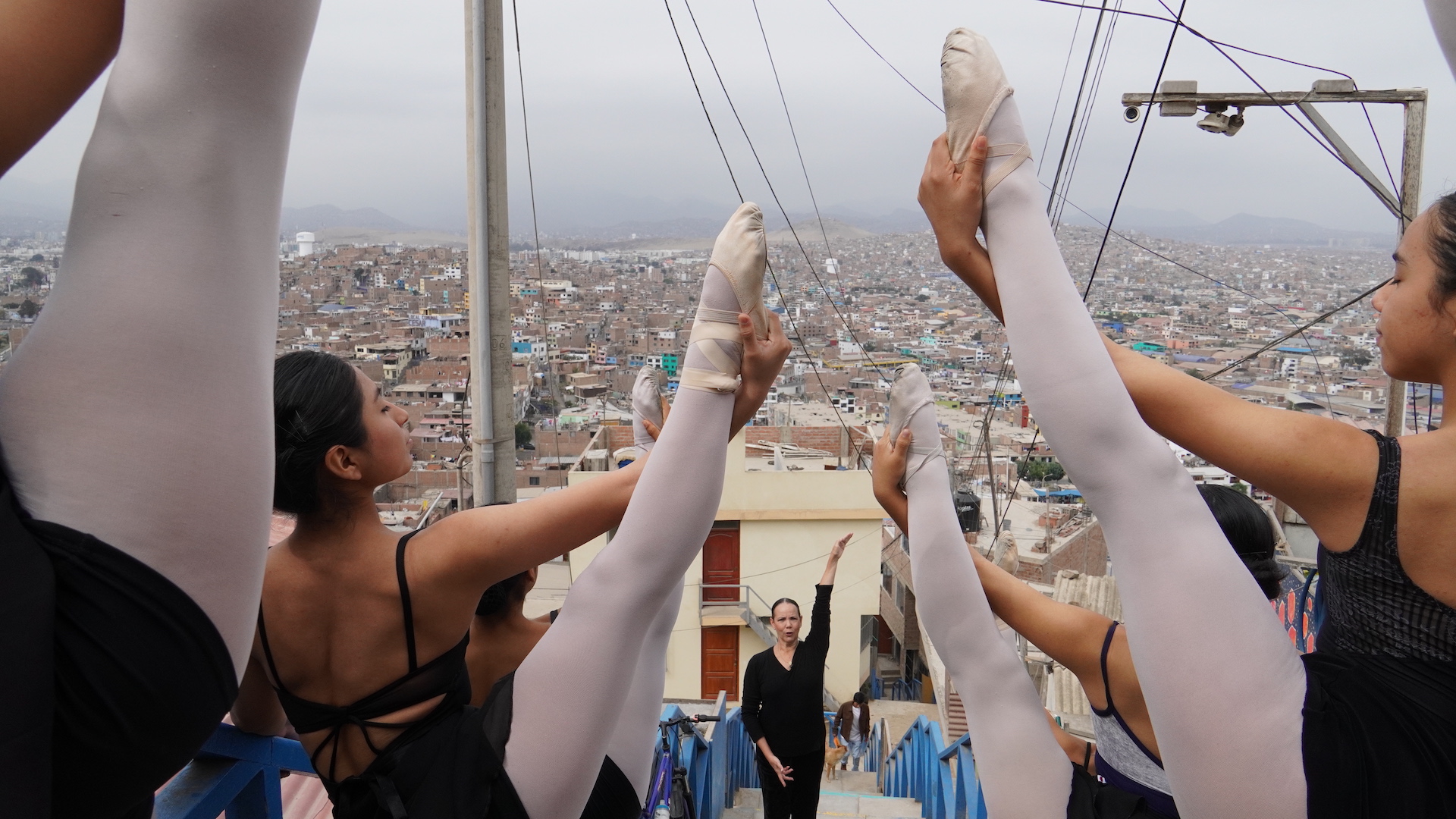
‘Not everyone has the perfect physique or the perfect physical condition,’ Silva reflected. ‘But if they start working they start to achieve what they can. It also teaches them that tomorrow, when they know what they want to do – with effort, work and discipline – they can achieve it.’
RESOURCES
Dan Collyns is a multimedia journalist and filmmaker covering Latin America, based in Lima. He works with the Guardian, BBC, CGTN America and others.

